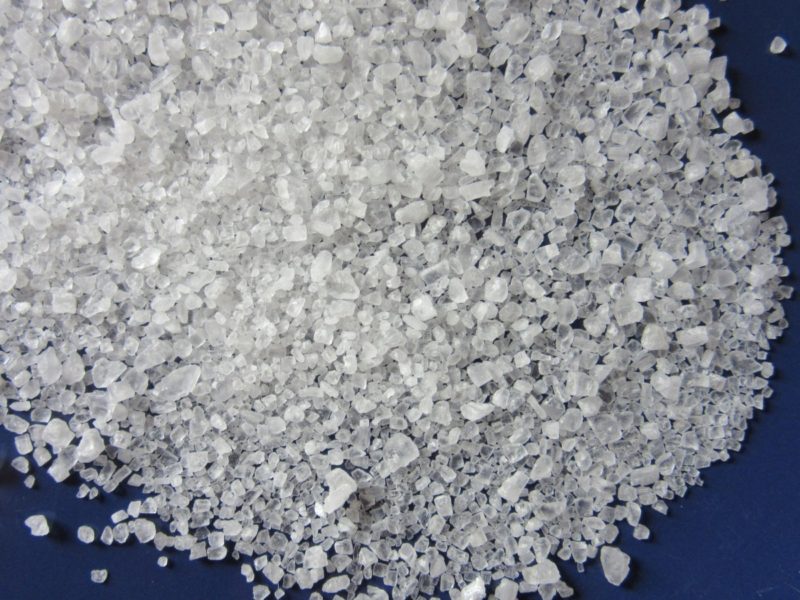Do you want to learn how to clean stove drip pans with ammonia? Maybe you’re already sick of dirty drip pans in your stoves, so grab some ammonia, gloves, cups, sponges, and Ziploc plastic bags ready so you can get rid of that tenacious dirt.
That tiny filth that accumulates as you cook every day produces a persistent oil that later becomes a hindrance that can impact your cooking.
It could be the consequence of uneven heat distribution, which causes soot to form, or the black stuff could result from oxidation, as the pan is constructed of aluminum. You all have your daily errands, and cleaning a stove might not be one of them. It always takes time to remove that greasy black substance that sticks to our pan, but with the help of ammonia, you can clean it faster and more efficiently.
Why Do You Use Ammonia?
We are searching through the internet and reading different home magazines on how to clean stove drip pans with ammonia. However, compared to other DIY cleaning solutions provided on the internet, cleaning it with ammonia is surprisingly simple and effective.
Knowing The Tools That You’re About To Use
You must know what kind of thing you are using and take extra precautions in handling them. First, you need some ammonia; there is safe ammonia available in the market for cleaning kitchenware such as pots, pans, and woks. Secondly, sponges or anything that you can use to wipe off the dirt. You can use old clothes that you can dispose of after or use sponges for better results. Next are gloves; ammonia can irritate; therefore, gloves are needed for our safety.
Assure that you prepare some cups and zipper plastic bags. It would help if you had a measurement for ammonia to use and zipper-lock plastic bags where you will keep our drip pans submerged in ammonia.
Steps To Clean Stove Drip Pans With Ammonia
Prepare your place where you will conduct your cleaning procedures. Ensure that there are no children nearby, for you will handle some chemicals, and if you are a minor and can’t understand the instructions, please seek help from an adult. If you have an electric stove, things are a bit different. Before removing the drip pans, make sure it’s unplugged because removing them while it’s plugged in can result in an electric shock.
Step #1. Pouring of ammonia
Pour the ammonia into the cups while wearing gloves. In this technique, only a quarter cup of ammonia is used. Since ammonia can cause poisoning, be sure the cups you’ll be using aren’t accustomed to handling food or any other edible material.
Step #2. Sealing the drip pans in plastic bags
Take your drip pans and place them in the Ziploc plastic bags. After that, pour down the ammonia. Remove excess air before closing the plastic bag and make sure that the drip pans are equally covered in ammonia, and there is no spot that the ammonia cannot reach. Leave the zipper-locked plastic bags with ammonia and drip pans for a few hours and place them in a place where there is proper ventilation to avoid unusual odors inside the house that can result in suffocation and be lethal.
Step #3. Finishing
After it, you can remove the drip pans inside the plastic bags, your gloves as they can cause minor burns if overexposed to the ammonia. Wipe off the remaining dirt with sponges or used clothes. Finally, dispose of the cups, sponges, cloths, gloves, and plastic bags that you’re used in this process. Do not recycle them.
How Often Do You Clean Your Drip Pan?
Every time you use the stovetop or prepare food, a bit of filth will be left behind, but don’t use ammonia if you’re cleaning it daily. Instead, clean it while the filth or residue is still fresh or new because it will harden over time and need much more effort to eliminate. On the other, if you are daily using your stovetop, you might clean it every week as it can damage the drip pans if you are cleaning it every after you cook because oxidation can occur and it will become rusty. You may want to read how to clean rusty wood stove.
What Are The Other Things You Can Use In Cleaning The Drip Pans?
You can find many things in our kitchen just in case you don’t have ammonia at home, or you want to be safe from the said chemical. As I mentioned earlier, ammonia is not ideal for every day or weekly use; you only use it when the dirt residue is hardened after not cleaning it for a long time.
You can use hot water; after using the stovetop, gently remove the drip pans and pour hot running water to soften the dirt such as oils and wasted dishes; then gently wipe it with a cloth or tissue. Just be careful not to get burned by the water or the drip pans.
Vinegar and baking soda are the most commonly used kitchen remedy in cleaning pots and all that stubborn dirt in every household equipment. Vinegar and baking soda, when mixed, create a chemical reaction that can remove any dirt stains. Know how to remove dirt stains.
Conclusion
I hope it gives insight into how to clean stove drip pans with ammonia, observe proper precautionary measures on handling the chemicals, and what to use when ammonia isn’t available in our household. Therefore, you need to be more hygienic and clean every time you use our kitchen. It may be helpful to read how to clean stainless steel stovetop and how to clean enamel stove top.

